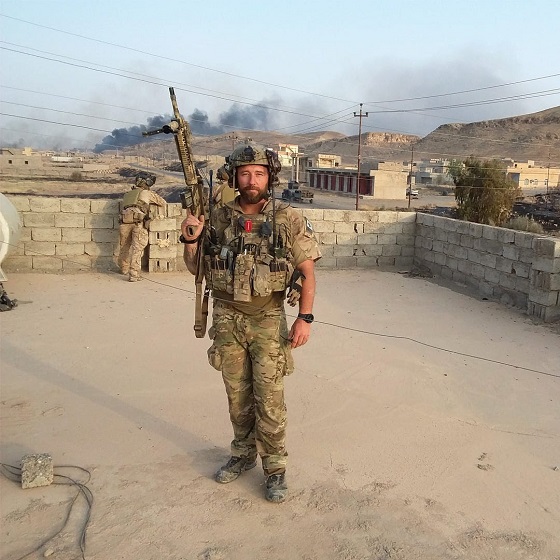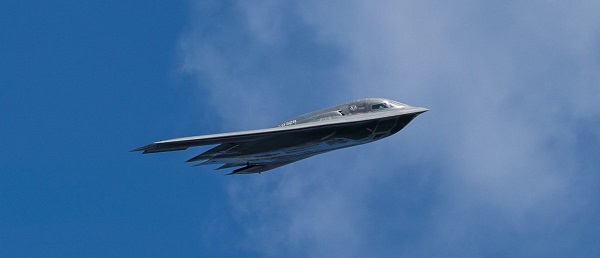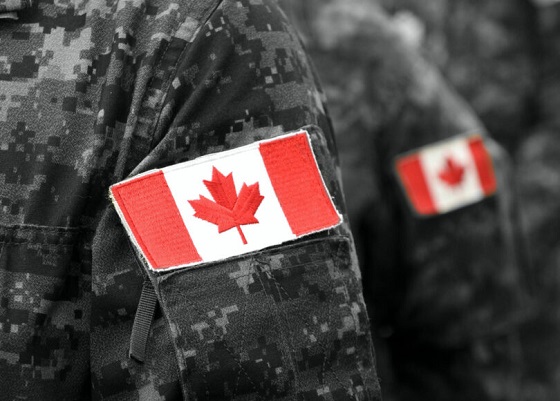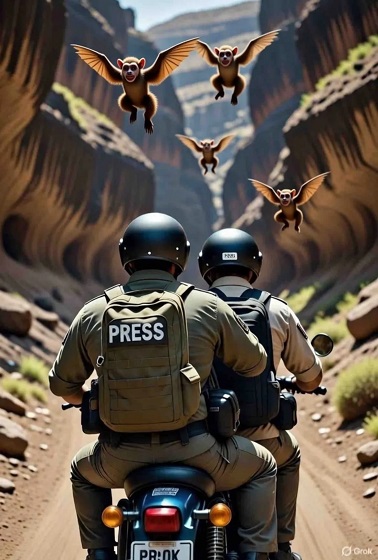armed forces
Canadian veterans battle invisible wounds of moral injury and addiction

Moral injury, a unique psychological trauma, drives many Canadian veterans to substance use disorders as they struggle with inadequate support
When he was stationed in Bosnia in 1994, Steve Lamrock would drive a truck loaded with food through villages full of hungry people.
As a Canadian Armed Forces platoon quartermaster, one of Lamrock’s duties was transporting food to other soldiers involved in the United Nations Protection Force’s peacekeeping mission in the war-torn country.
“I had people starving to death, children starving to death,” he recalled, his wife seated beside him for support. “I could see, weekly, the deterioration in certain people in the community and the elderly from a lack of nutrition.”
Often, there was a surplus of rations.
“The UN policy was, if you can’t give exactly equal to both sides, you don’t give anything away,” he said, adding that it could trigger violent raids if you provided food to just one faction.
“So we would throw out food when there’s people starving to death.”
Moral dilemmas like these haunted Lamrock long after he retired from the military in 2009. Tormented by nightmares, he turned to alcohol to cope. “When I drank so much I passed out, I wouldn’t dream or remember the dreams as vividly or as often,” he said.
Lamrock — whose 24-year military career included tours in Afghanistan, Bosnia, Croatia, Kosovo and Iraq — was identified as suffering from psychological distress caused by the perception of having violated one’s moral or ethical beliefs. Experts are now calling this moral injury.
Moral injury is not formally recognized in the Diagnostic and Statistical Manual of Mental Disorders, an authoritative manual on mental disorders. But experts and veterans say moral injury affects many individuals who serve in the military, and requires better institutional support and treatment than are currently available.
Moral injury and addiction
“[Moral injury presents as] shame, guilt and anger that occurs when someone is exposed to an event that goes against their moral values, standards or ethics,” said Dr. Don Richardson, a psychiatrist and scientific director of the MacDonald Franklin Operational Stress Injury Research Centre in London, Ont. The centre studies the impact of stress injuries on military personnel, veterans and first responders.
Moral injury can result not only from witnessing or causing harm, but also from being affected by an organization’s actions or inactions, Richardson says.
The term moral injury was first introduced in the 1990s by American psychiatrist Dr. Jonathan Shay, who worked with veterans of the Vietnam War. It gained wider recognition following the Iraq and Afghanistan wars, when traditional treatments for post-traumatic stress disorder (PTSD) — such as Cognitive Behavioural Therapy — were proving to be only partially effective.
While fear is often at the core of traditional PTSD cases, feelings of guilt, shame, anger and betrayal are more strongly linked to cases of moral injury, says Dr. Anthony Nazarov, associate director of the MacDonald Franklin Operational Stress Injury Research Centre and an expert on moral injury.
Nearly 60 per cent of Canadian Armed Forces personnel deployed in NATO operations in Afghanistan reported exposure to morally injurious events, according to a 2018 study co-authored by Nazarov. Those exposed to such events demonstrated a greater likelihood of developing PTSD and major depressive disorders.
Dr. Ronald Shore, a research scientist and assistant professor in psychiatry at Queen’s University, says individuals suffering from moral injury often develop coping strategies due to a lack of support to help them process traumatic experiences.
One common coping mechanism is substance use, he says.
“You’re constantly feeling like something is wrong with you, that you’ve done something wrong … that leads to that self-regulation with addiction,” Shore said.
Lamrock says his experiences in Bosnia — and the habits he developed afterwards — deeply affected him and his family.
He recalled promising his young daughter they would do something fun after a night’s rest. “‘No, you won’t, Daddy, you won’t get up,’” she had replied, knowing he would likely be too hungover.
“That was my motivation to quit,” he said.
Betrayal
It is common for veterans suffering from moral injury to feel angry or betrayed due to the military’s actions or lack of support.
“[A person feels] betrayed by policies, betrayed by leaders, betrayed by organizations,” said Nazarov.
This has been the case for Gordon Hurley, 37, whose 14-year career in the Canadian Armed Forces included tours in Afghanistan, Africa and Iraq.
“When you get out, there’s nothing,” Hurley said. “If you think that Veterans Affairs is going to support you … they will, but you’re gonna have to fight for it.”
Hurley was medically discharged from the military in 2021 due to various physical and mental health challenges, including PTSD. He says Veterans Affairs requires him to continually prove the severity of his injuries to maintain disability support and benefits, such as reimbursements for retinal surgery and rehabilitation.
Hurley says that having to repeatedly prove his injuries to Veterans Affairs has been frustrating. “You were the ones who released me from the military … for these injuries, but now you are asking me to prove them back to you?” he said.
The Canadian Armed Forces redirected inquiries about support for veterans with moral injury and substance use disorder to Veterans Affairs Canada.
In an emailed statement to Canadian Affairs, Veterans Affairs spokesperson Josh Bueckert said mental health-care practitioners who work with veterans are “well aware of moral injury” and recognize the condition is often associated with operational stress injuries.
Bueckert said the department provides funding to organizations such as the Atlas Institute for Veterans and Families, which has a moral injury toolkit for veterans.
He also noted the department offers veterans a range of mental health resources, including access to 11 operational stress injury clinics and a network of 12,000 mental health professionals. Bueckert said veterans also have access to treatments for substance use disorder and for conditions such as “trauma-and-stressor-related disorders.”
Hurley acknowledges all these benefits are available, but says they are hard-won.
“All those benefits listed you get, but unless your condition has been [approved by the department], you do not receive those benefits,” he said.
‘Never-ending battle’
Josh Muir, 49, served nearly 14 years in the military and was deployed twice to Afghanistan. After sustaining soft tissue damage, hearing damage and spinal injuries in a 2010 improvised explosive device attack, he was medically discharged from the military — something he says he opposed because the military had become his entire identity.
“As soon as I’ve crossed this threshold, I no longer really have a clear picture of who I am, what I am, what use I might play in the future, and where to go from here,” he said.
He described feeling discarded by the military. “I was very quickly turned from a valuable asset into a liability that needed to be rid of as quickly and as expeditiously as possible,” said Muir, who turned to alcohol as a crutch.
 |
Canadian Forces veteran Josh Muir and his son Max at a beach in Vancouver, April 2024. [Photo Credit: Atlas Institute for Veterans and Families]
Shore, of Queen’s University, says recovering from moral injury and substance use disorder can require rebuilding one’s identity as the sense of purpose and belonging one gets from being part of the military fades.
Therapies such as acceptance and commitment therapy help veterans accept difficult emotions and commit to taking actions that align with their values. Another treatment called narrative therapy helps veterans separate their problems from their identity. These therapies can be effective at helping veterans recover, says Richardson, of the MacDonald Franklin Operational Stress Injury Research Centre.
Richardson also encourages veterans to seek peer support through groups like Operational Stress Injury Social Support or True Patriot Love Foundation.
David Fascinato joined the military in 2005 and served in psychological operations, including a deployment to Afghanistan in 2010.
Fascinato, who has since left the military, has struggled with mental health issues and moral injury. He says he has come to realize that veterans need organizations that offer community, purpose and tools to rebuild their sense of self.
This realization led him to co-found Team Rubicon Canada, a volunteer disaster relief organization that conducts missions in Canada and abroad. “Doing things with others for others, that’s where it helps reduce substance misuse and provides an off-ramp,” he said.
Subscribe for free to get BTN’s latest news and analysis, or donate to our journalism fund.
Fascinato has also found purpose by serving as executive director of Heroic Hearts Project Canada, an organization that supports veterans and first responders with alternative mental health treatments such as psychedelics.
Richardson and Shore view psychedelic-assisted therapy — which uses psychedelics to disrupt ingrained neural patterns — as a promising treatment for moral injury and substance use disorder..
Shore says support for psychedelic trials with veterans is still limited due to safety concerns and insufficient research. However, Canadian veterans are seeking psychedelic therapy in overseas retreats in places like Mexico and Peru.
Hurley says he was only able to recover from his alcoholism after seeking treatment at a psychedelic retreat in Tijuana, Mexico in 2022. “Only after I did ibogaine did I get released from [alcohol addiction],” he said, referring to a type of psychedelic drug.
While the production, sale and possession of psychedelics remain illegal in Canada, Health Canada in 2023 amended its Special Access Program, which allows health-care providers to request psychedelic medications for patients with life-threatening or treatment-resistant conditions.
In Muir’s case, he was able to gain control of his addiction and mental health issues after completing a two-month residential program at a treatment centre on Vancouver Island. The cost of the program was covered by Veterans Affairs.
While Muir is grateful to have his treatment costs covered, he says he would like to see Veterans Affairs generally improve the support it offers veterans, including offering more personalized assistance in the transition to civilian life.
He describes his experience with the Canadian Armed Forces’ transition program as taking in “information via fire hose,” with overwhelming seminars and a lack of personal guidance to navigate the process.
“There’s little services and ceremonies,” said Muir. “But ultimately you have to go back to you being a small cog in a large machine.”
“I felt like I was going to become Army Surplus, just like the items in the store that sit there after their function has been superseded by newer models.”
“I think it’s absurd,” said Fascinato. “We have to pick up the proverbial sword and shield, or in this case pen and pad of paper, and seemingly wage this never-ending battle for access to care that shouldn’t be this difficult to get.”
This article was produced through the Breaking Needles Fellowship Program, which provided a grant to Canadian Affairs, a digital media outlet, to fund journalism exploring addiction and crime in Canada. Articles produced through the Fellowship are co-published by Break The Needle and Canadian Affairs.
If you want to help us commission more high-quality journalism, consider getting a voluntary paid subscription.
armed forces
Global Military Industrial Complex Has Never Had It So Good, New Report Finds


From the Daily Caller News Foundation
The global war business scored record revenues in 2024 amid multiple protracted proxy conflicts across the world, according to a new industry analysis released on Monday.
The top 100 arms manufacturers in the world raked in $679 billion in revenue in 2024, up 5.9% from the year prior, according to a new Stockholm International Peace Research Institute (SIPRI) study. The figure marks the highest ever revenue for manufacturers recorded by SIPRI as the group credits major conflicts for supplying the large appetite for arms around the world.
“The rise in the total arms revenues of the Top 100 in 2024 was mostly due to overall increases in the arms revenues of companies based in Europe and the United States,” SIPRI said in their report. “There were year-on-year increases in all the geographical areas covered by the ranking apart from Asia and Oceania, which saw a slight decrease, largely as a result of a notable drop in the total arms revenues of Chinese companies.”
Notably, Chinese arms manufacturers saw a large drop in reported revenues, declining 10% from 2023 to 2024, according to SIPRI. Just off China’s shores, Japan’s arms industry saw the largest single year-over-year increase in revenue of all regions measured, jumping 40% from 2023 to 2024.
American companies dominate the top of the list, which measures individual companies’ revenue, with Lockheed Martin taking the top spot with $64,650,000,000 of arms revenue in 2024, according to the report. Raytheon Technologies, Northrop Grumman and BAE Systems follow shortly after in revenue,
The Czechoslovak Group recorded the single largest jump in year-on-year revenue from 2023 to 2024, increasing its haul by 193%, according to SIPRI. The increase is largely driven by their crucial role in supplying arms and ammunition to Ukraine.
The Pentagon contracted one of the group’s subsidiaries in August to build a new ammo plant in the U.S. to replenish artillery shell stockpiles drained by U.S. aid to Ukraine.
“In 2024 the growing demand for military equipment around the world, primarily linked to rising geopolitical tensions, accelerated the increase in total Top 100 arms revenues seen in 2023,” the report reads. “More than three quarters of companies in the Top 100 (77 companies) increased their arms revenues in 2024, with 42 reporting at least double-digit percentage growth.”
armed forces
Carney’s ‘Shared Sacrifice’ Is a Lie. Only Veterans Are Bleeding for This Budget

How the 2025 Federal Budget Demands More From Those Who’ve Already Given Everything
I’ve lived the word sacrifice.
Not the political kind that comes in speeches and press releases the real kind. The kind Mark Carney wouldn’t know if it slapped him in the face. The kind that costs sleep, sanity, blood. I’ve watched friends trade comfort for duty, and I’ve watched some of them leave in body bags while the rest of us carried the weight of their absence. So when the Prime Minister stood up this year and told Canadians the new budget would “require sacrifice,” I felt that familiar tightening in the gut the one every veteran knows. You brace for impact. You hope the pain lands in a place that makes sense.
It didn’t.
Kelsi Sheren is a reader-supported publication.
To receive new posts and support my work, consider becoming a free or paid subscriber.
Six months into Mark Carney’s limp imitation of leadership, it’s painfully clear who’s actually paying the bill. The 2025 budget somehow managing to bleed the country dry while still projecting a $78-billion deficit shields the political class, funnels money toward his network of insiders, and then quietly hacks away at the one department that should be sacrosanct: Veterans Affairs Canada.
If there’s one group that’s earned the right to be spared from government-imposed scarcity, it’s the people who carried this country’s flag into danger. Veterans don’t “symbolize” sacrifice they embody it on the daily And when Ottawa tightens the belt on VAC, the consequences aren’t abstract. They’re brutal and direct, causing nothing but more death and destruction. But Mark Carney doesn’t lose sleep over veterans killing themselves.
Punishment disguised as budgeting for a veteran means the difference between keeping a roof or sleeping in a truck. Punishment disguised as budgeting means PTSD left untreated until it turns a human being into another suicide statistic. Punishment disguised as budgeting means a veteran choosing between groceries and medication because some number-shuffler in Ottawa wants to pretend they’re being “responsible.”
This isn’t fiscal restraint it’s political betrayal wrapped in government stationery. Ottawa sells it as hard choices, but the hardness always falls on the backs of the same people: the ones who already paid more than their share, the ones who can’t afford another hit. Carney and his cabinet won’t feel a thing. Not one missed meal. Not one sleepless night. Not one flashback.
But the men and women who already paid in flesh? They’re the ones being told to give more.
That’s not sacrifice.
That’s abandonment dressed up as fiscal policy.
And Canadians need to recognize it for what it is a government that demands loyalty while refusing to give any in return. The fine print in the government’s own documents reveals what the slogans won’t.
Over the next two years, VAC plans to cut $2.227 billion from its “Benefits, Services and Support” programs. [2] Broader “savings initiatives” reach $4.4 billion over four years, much of it through reductions to the medical-cannabis program that thousands of veterans rely on to manage chronic pain and PTSD. [3] Independent analysts estimate yearly losses of roughly $900 million once the cuts are fully implemented. [4]
To put that in perspective: no other department is seeing reductions on this scale. Not Defence, not Infrastructure, not the Prime Minister’s Office thats for damn sure. Only the people who’ve already paid their debt to this country are being asked to give again.
The government’s line is tidy: “We’re not cutting services we’re modernizing. Artificial Intelligence will streamline processing and improve efficiency.”
That sounds fine until you read the departmental notes. The “modernization” translates into fewer human case managers, longer waits, and narrower eligibility. It’s austerity dressed up as innovation. I’ve coached veterans through the system. They don’t need algorithms; they need advocates who understand trauma, identity loss, and the grind of reintegration. They need empathy, not automation.
This isn’t abstract accounting. Behind every dollar is a life on the edge, the human cost and toll is very real.
- Homelessness: Veterans make up a disproportionate number of Canada’s homeless population. Cutting benefits only deepens that crisis.
- Mental Health: Parliament’s ongoing study on veteran suicide shows rising rates of despair linked to delays and denials in VAC services. [5] Knowing MAID for mental illness alone in 2027 will take out a significant amount of us.
- Food Insecurity: A 2024 VAC survey found nearly one in four veterans reported struggling to afford basic groceries. That’s before these cuts.
We talk about “service” like it ends with deployment. It doesn’t. Service continues in how a nation cares for those who carried its battles, and this doesn’t include the cannabis cut to medication or the fight’s we have to fight when they tell us our injuries are “not service related”
The insult is magnified by the timing. These cuts were announced just days before November 11 Remembrance Day, when Canadians bow their heads and say, “We will remember them.”
Apparently, the government remembered to draft the talking points but forgot the meaning behind them, not a single one of the liberal government should have been allowed to show their faces to veteran’s or at a ceremony. They’re nothing but liars, grifters and traitors to this nation. Yes I’m talking about Jill McKnight and Mark Carney.
The budget still runs the second-largest deficit in Canadian history. [6]
Veteran cuts don’t fix that. They barely dent it. What they do is let the government say it’s “finding efficiencies” while avoiding the real structural overspending that created the problem in the first place. When a government chooses to protect its pet projects and insider contracts while pulling support from veterans, that’s not fiscal discipline it’s moral cowardice. The worst part is that This isn’t an isolated move. It fits a six-month pattern: large, attention-grabbing announcements about “reform,” followed by fine print that concentrates power and shifts burden downward. Veterans just happen to be the first visible casualty.
The same budget expands spending in other politically convenient areas green-transition subsidies, digital-governance infrastructure, and administration while the people who once embodied service are told to tighten their belts.
As a combat veteran, I know what it’s like to come home and realize that the fight didn’t end overseas it just changed terrain. We fought for freedom abroad only to watch bureaucratic neglect wage a quieter war here at home. Veterans don’t ask for privilege. They ask for respect, for competence, for follow-through on the promises this country made when it sent them into harm’s way.
Here’s what really needs to change, the liberal government has to go, thats step one. Restore VAC funding immediately. Any “savings” plan that touches benefits, services, or support should be scrapped. End the AI façade. Efficiency can’t replace empathy. Keep human case workers who understand the veteran experience. Audit and transparency. Publish a detailed breakdown of where VAC funds are cut and who approved it. Canadians deserve to see the receipts. National accountability. Every MP who voted for this budget should face veterans in their constituency and explain it, face-to-face.
Budgets are moral documents. They show what a country values. By slashing VAC while running record deficits, this government declared that veterans are expendable line items, not national obligations. The Prime Minister promised “shared sacrifice.” But the only people truly sacrificing are the ones who already gave more than most Canadians ever will.
Sacrifice isn’t about spreadsheets; it’s about service. It’s what every veteran understood when they raised their right hand. This government’s brand of sacrifice asking wounded soldiers to pay for political mismanagement isn’t austerity. It’s abandonment.
Canada owes its veterans more than a wreath once a year. It owes them respect written into every budget, not erased from it.
KELSI SHEREN
Footnotes
[1] The Guardian, “Canada’s 2025 Federal Budget Adds Tens of Billions to Deficit as Carney Spends to Dampen Tariffs Effect,” Nov 5 2025.
[2] True North Wire, “Liberal Budget to Cut $4.23 Billion from Veterans Affairs,” Nov 2025.
[3] StratCann, “Budget 2025 Includes Goal of Saving $4.4 Billion in Medical Cannabis Benefits,” Nov 2025.
[4] Canadian Centre for Policy Alternatives, “Where Will the Federal Government Cut to Pay for Military Spending and Tax Cuts?” Nov 2025.
[5] House of Commons Standing Committee on Veterans Affairs, “Study on Veteran Suicide and Sanctuary Trauma,” ongoing 2025.
[6] CBC News, “Federal Budget 2025 Deficit Second Largest in Canadian History,” Nov 2025.
Kelsi Sheren is a reader-supported publication.
To receive new posts and support my work, consider becoming a free or paid subscriber.
-

 Crime2 days ago
Crime2 days agoTerror in Australia: 12 killed after gunmen open fire on Hanukkah celebration
-

 Crime2 days ago
Crime2 days agoHero bystander disarms shooter in Australian terror attack
-

 Alberta15 hours ago
Alberta15 hours agoSchools should go back to basics to mitigate effects of AI
-

 Censorship Industrial Complex12 hours ago
Censorship Industrial Complex12 hours agoDeath by a thousand clicks – government censorship of Canada’s internet
-

 International18 hours ago
International18 hours agoAt Least 15 Killed In Shooting Targeting Jewish Community At Australia’s Bondi Beach, Police Say
-

 Daily Caller14 hours ago
Daily Caller14 hours agoChinese Billionaire Tried To Build US-Born Baby Empire As Overseas Elites Turn To American Surrogates
-

 Media2 days ago
Media2 days agoReporters determined to drive their industry and its reputation into the abyss one Tweet at a time
-

 Great Reset15 hours ago
Great Reset15 hours agoViral TikTok video shows 7-year-old cuddling great-grandfather before he’s euthanized





